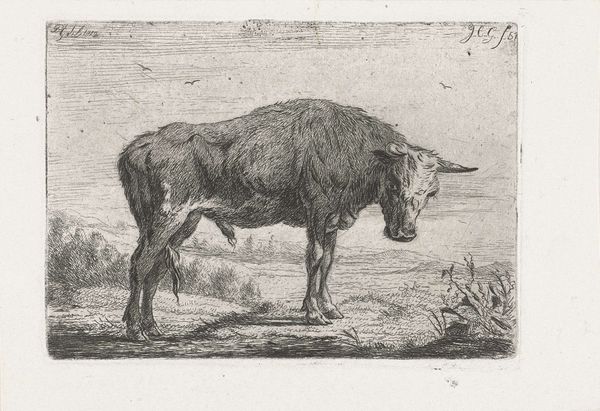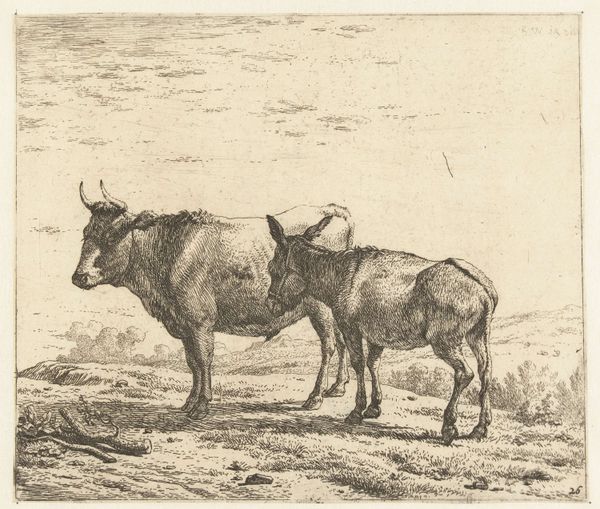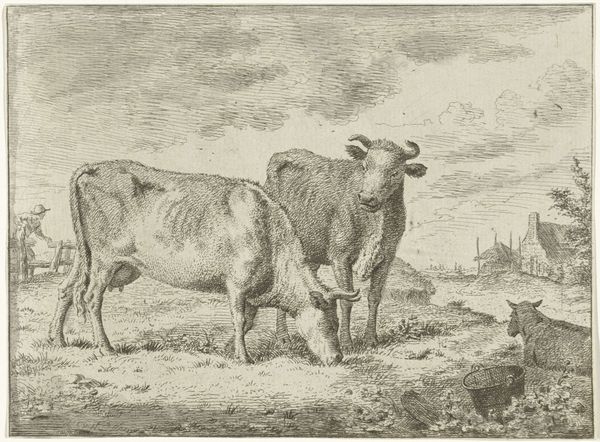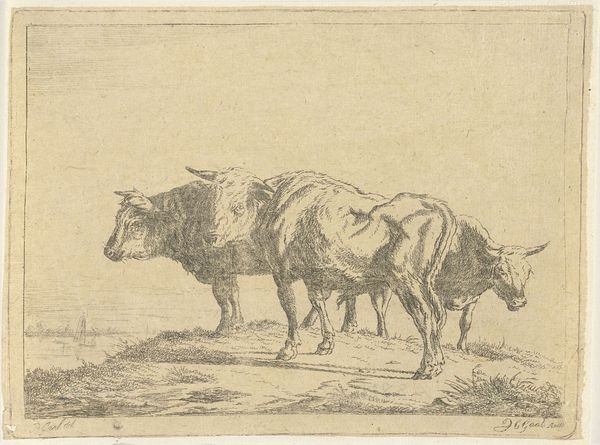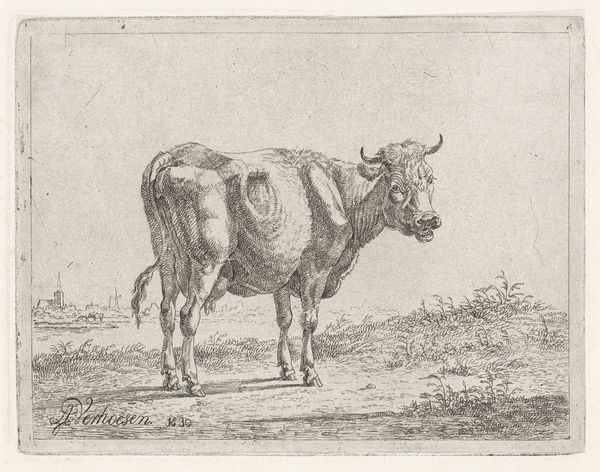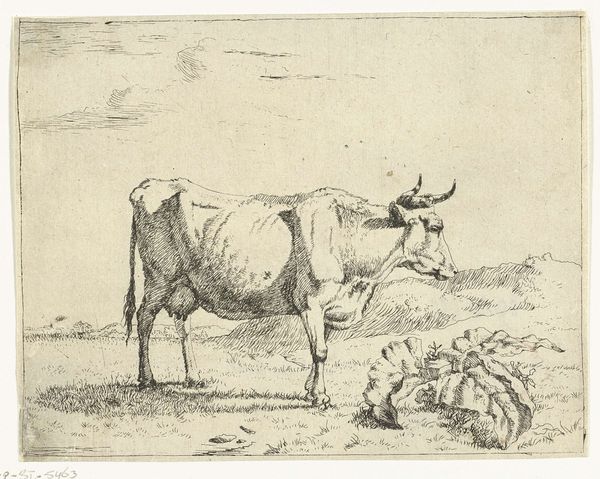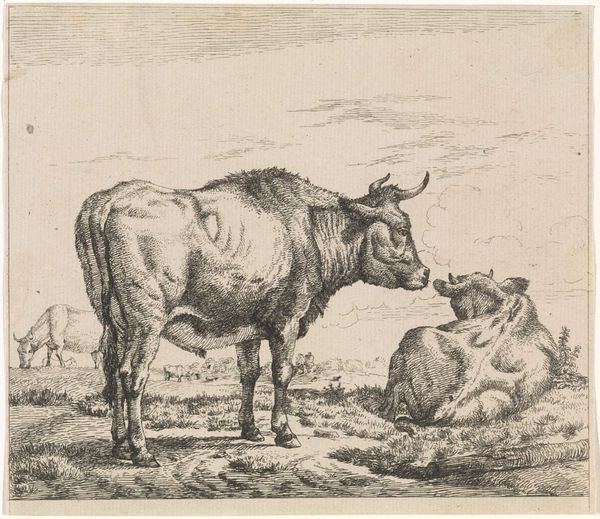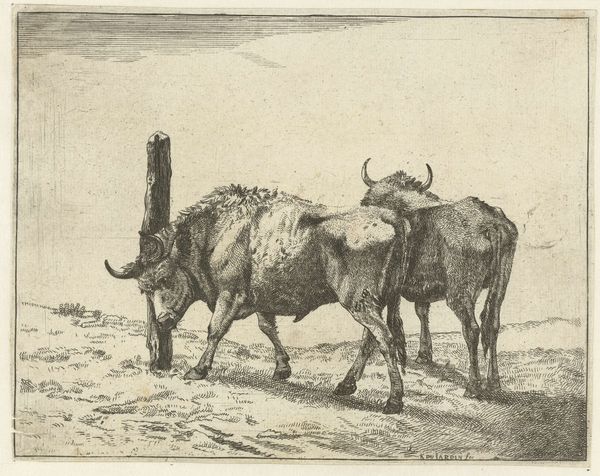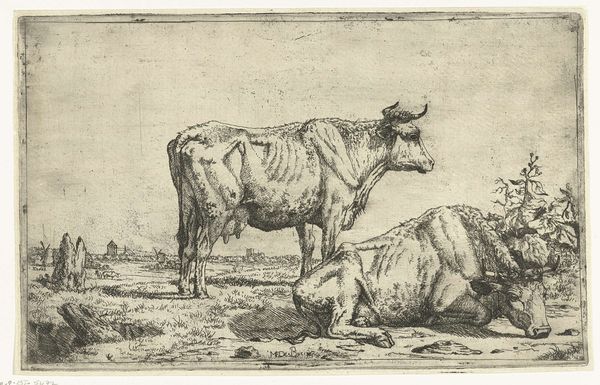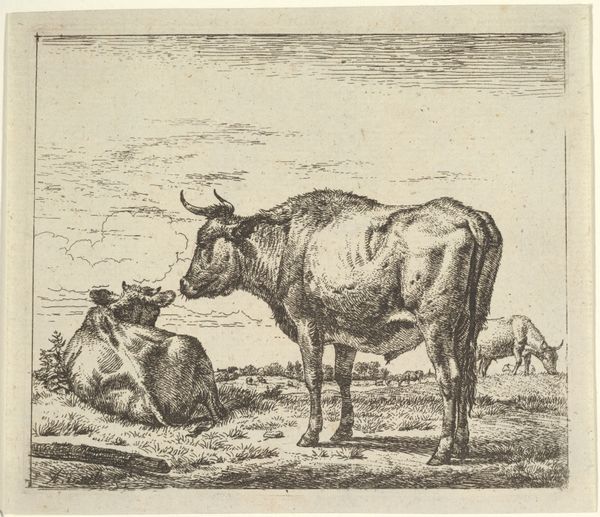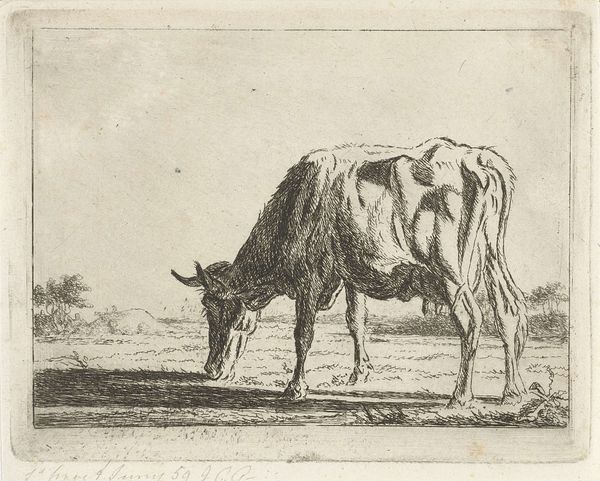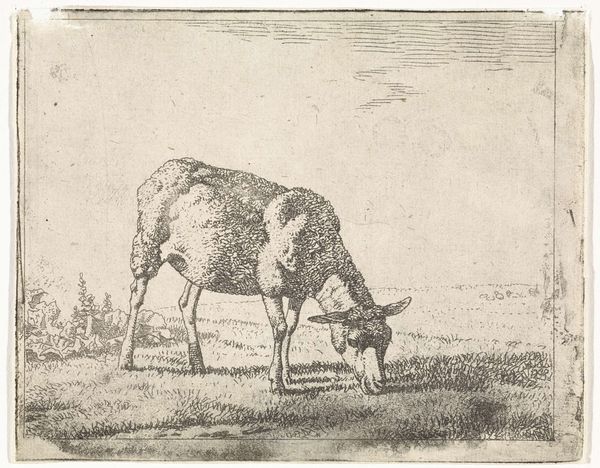
print, etching, engraving
# print
#
etching
#
landscape
#
figuration
#
engraving
#
realism
Dimensions: height 123 mm, width 168 mm
Copyright: Rijks Museum: Open Domain
Curator: Up next, we have an etching and engraving titled "Twee koeien," or "Two Cows," by Anthony Jacobus Offermans. The piece likely dates somewhere between 1815 and 1872. Editor: My first thought is that this feels like a celebration of the pastoral. You can almost smell the grass! Look at the textures—rough hides against a backdrop of meticulous landscape detail. Curator: It's fascinating how Offermans, likely responding to the growing urban centers, romanticizes the agrarian life. Consider the societal context: The 19th century saw significant shifts with industrialization impacting agricultural practices. Images like this would appeal to those longing for a simpler, pre-industrial existence. Editor: Exactly, it is an idealized image. Notice how the detailed rendering—the cross-hatching to create tonal depth. The material, an etching print, allowed for multiple reproductions and broader distribution, embedding this vision into popular consciousness. It would be accessible. Curator: And that accessibility is key to understanding its influence. Prints were not confined to elite art collections. They circulated widely, shaping public perceptions and national identities. Images of cows became symbols of Dutch prosperity and tradition. Editor: But let's not forget the labor involved in producing such images. Think of the artisan carefully etching the plate, each line a deliberate mark. There is artistry even in this reproductive form. Curator: Yes, the image's politics and cultural context enhance our understanding. The image reinforces ideas of rural idyll as separate from increasingly urban environments. It's more than just pretty cows! Editor: Absolutely. Appreciating the artistic production—from the quality of the materials to the etcher's hand—provides a richer sense of how art functioned within and reflected society. I feel a renewed respect for these under-recognized techniques. Curator: By considering Offermans’s choices within a wider view, we start to see how seemingly simple depictions of animals carry immense significance. Editor: And to consider their broader circulation enriches the value that we attribute to artworks like these. It definitely helps us get closer to a rich story.
Comments
No comments
Be the first to comment and join the conversation on the ultimate creative platform.


